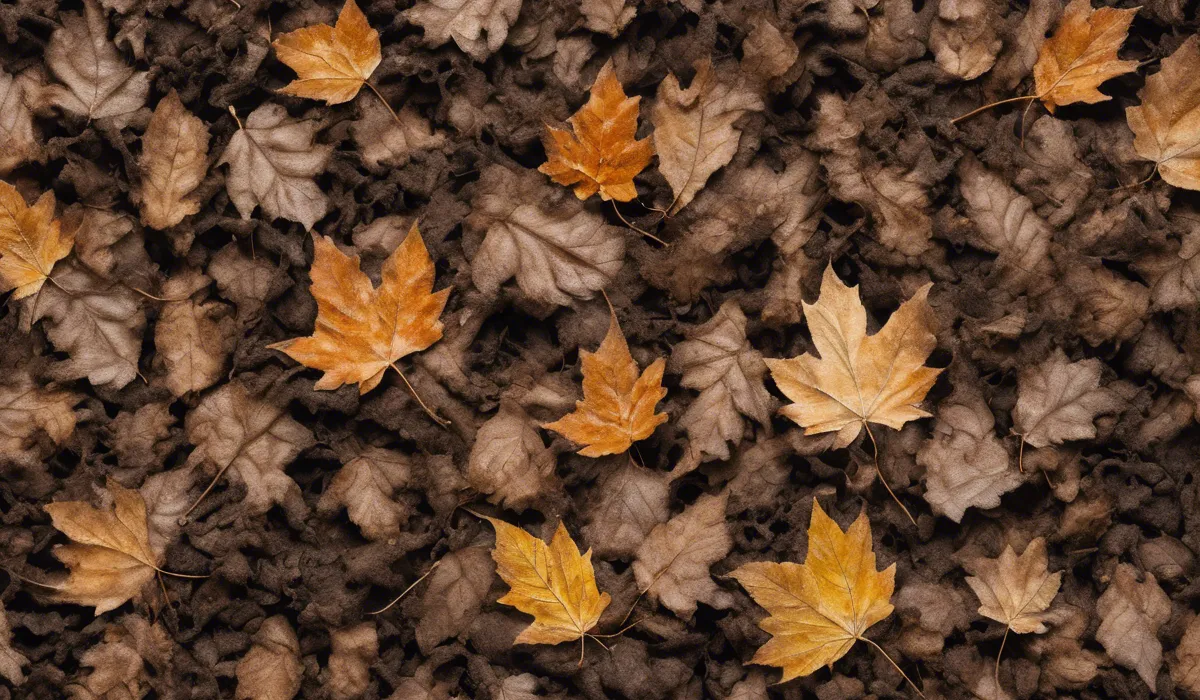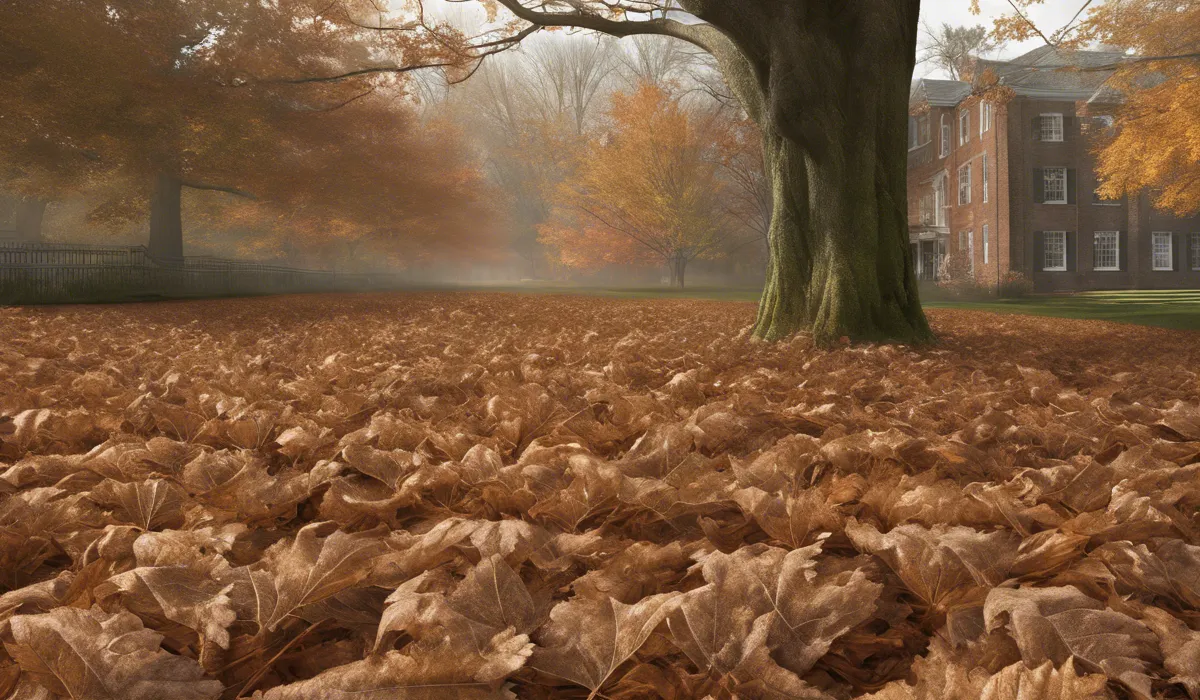Leaf mold itself is not dangerous; it is decomposed leaves, often used as a soil conditioner. It’s generally safe and beneficial for plants, but in rare cases, it may harbor fungi that can cause plant diseases. For humans, it poses minimal risk unless someone has severe mold allergies.
Understanding Leaf Mold

What Is Leaf Mold?
Leaf mold is a form of compost primarily made from decomposed leaves. Over time, leaves that fall to the ground break down through a natural process involving water, microorganisms, and fungi.
This transformation results in a dark, crumbly, and nutrient-rich substance known as leaf mold. Unlike traditional compost, which is a mixture of various organic materials, leaf mold consists almost entirely of leaves.
Formation Process of Leaf Mold
The creation of leaf mold is a slow but straightforward process. It begins when leaves fall and accumulate in a pile.
Moisture from rain or dew initiates decomposition, and as the leaves break down, they become a habitat for various microorganisms.
These tiny creatures, along with the help of fungi, gradually convert the leaves into a humus-like material over a period of one to three years.
Leaf Mold vs. Compost vs. Other Organic Materials
Leaf mold differs from compost in its composition and the way it is made. Compost is a mix of green material (like grass clippings and kitchen scraps) and brown material (such as dried leaves and branches), which decomposes more quickly due to the nitrogen content from the green materials.
Other organic materials, like mulch, may not decompose as fully as leaf mold or compost and serve primarily to protect and insulate the soil.
Health Implications of Leaf Mold

Allergens in Leaf Mold
For most people, leaf mold is harmless. However, it can contain mold spores that might trigger allergic reactions in sensitive individuals.
These reactions typically involve sneezing, coughing, and itchy eyes. People with mold allergies should be cautious when handling leaf mold or when they are around areas where it is present.
Mold Spores and Respiratory Health
Inhaling mold spores from leaf mold can affect respiratory health, particularly for those with asthma or other lung conditions.
The spores can irritate the airways, leading to difficulty breathing, wheezing, or asthma attacks. Wearing a mask while working with leaf mold can help prevent these issues.
Risks for Immune-Compromised Individuals
Individuals with weakened immune systems, including those undergoing chemotherapy or living with HIV/AIDS, should be especially cautious around leaf mold.
The presence of mold spores can pose a higher risk of infection or illness for these individuals. Protective gear and proper hygiene are essential when handling leaf mold.
Safe Handling of Leaf Mold
When dealing with leaf mold, it is crucial to wear gloves and a mask to minimize direct contact with the material and inhalation of spores. Keeping the material damp can also reduce the number of airborne spores.
After handling leaf mold, it is wise to wash hands thoroughly and change clothing to remove any lingering spores.
Environmental and Horticultural Benefits of Leaf Mold

Leaf Mold as a Soil Conditioner
Leaf mold is an excellent soil conditioner, improving the structure and fertility of garden soil.
When mixed into the soil, it enhances the soil’s ability to retain nutrients and improves the overall environment for plant roots. This means plants can grow stronger and healthier with the help of leaf mold.
Improving Water Retention and Aeration
With its spongy texture, leaf mold can hold several times its weight in water, significantly improving the soil’s moisture retention.
This reduces the need for frequent watering and protects plants during dry spells. Additionally, leaf mold helps to aerate compacted soils, allowing roots to receive the oxygen they need to thrive.
Supporting Microorganism Populations
Leaf mold is home to a wealth of beneficial microorganisms, which play a vital role in maintaining healthy soil.
These organisms break down organic matter, releasing nutrients that plants can absorb. They also help to suppress plant diseases and pests, contributing to a more balanced and productive garden ecosystem.
Sustainable Use in Landscaping
Using leaf mold in landscaping is a sustainable practice that reduces waste and recycles natural resources.
By turning fallen leaves into a valuable soil amendment, gardeners can minimize the need for synthetic fertilizers and improve soil health naturally.
Leaf mold can also be used as a mulch to insulate plants and suppress weeds, providing a dual benefit for gardens and landscapes.
FAQs About Leaf Mold Safety
Is leaf mold dangerous to plants?
Leaf mold is generally safe and beneficial for plants, though it may occasionally harbor fungi that can cause plant diseases.
Can leaf mold be used safely in gardens?
Yes, leaf mold can be used as a soil conditioner in gardens to improve soil structure and nutrient content.
Is leaf mold hazardous to human health?
For the general population, leaf mold poses minimal risk, but it can be problematic for individuals with severe mold allergies.
Should gardeners take precautions when handling leaf mold?
Gardeners with mold allergies should wear protective gear like gloves and masks to minimize exposure to potential allergens in leaf mold.
Can leaf mold cause respiratory issues?
For most people, leaf mold is not a respiratory irritant, but individuals with severe mold allergies or compromised immune systems may experience respiratory issues when exposed to it.
Final Thoughts
Leaf mold is a decomposed leaf material used as a soil enhancer, presenting no significant danger to most plants or humans.
While it is mainly safe and advantageous for plant growth, it can occasionally carry fungi that may lead to plant diseases. For humans, the risk is negligible unless one has a severe mold allergy.
